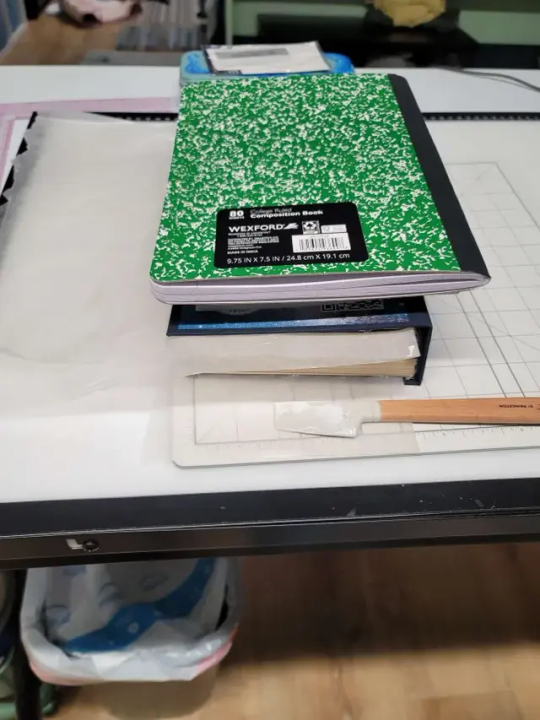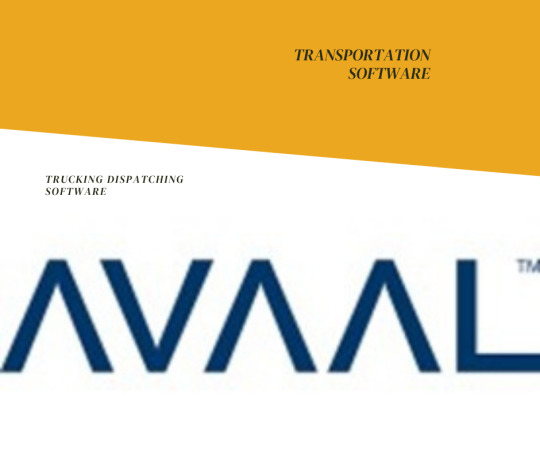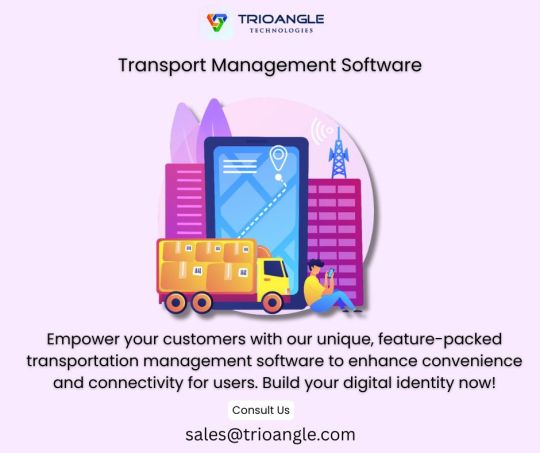#TMS Software providers
Explore tagged Tumblr posts
Text
Freight Cost In Cement Industry

Revamp your cement industry's logistics operations with our specialized freight cost solutions designed specifically for the Cement Industry. Our seasoned team understands the unique challenges and requirements of transporting cement, and we provide tailored strategies to optimize your shipping expenses. From efficient route planning to negotiating favorable rates with cement carriers, we'll ensure cost-effectiveness without compromising on timely deliveries. Streamline your cement supply chain and improve your bottom line. Contact us now to unlock the untapped potential for cost savings in Freight Cost in Cement Industry.
Don't let high freight costs weigh you down - take advantage of our expertise and propel your cement business forward!
#tms#software#fretron#transportation management software#logistics#transport management system#tms for shippers#tms logistics#tms software providers#logistics software#b2bbusiness
1 note
·
View note
Text
Covers Bookbinding for beginners by a beginner- The Home Stretch
*drinks half a gallon of coffee*
COVERS!
You've gotten your typeset done for the fic, you've battled the demon that is your printer, folded pages, stitched pages, glued pages, glued end pages, and end bands. Made the cover, covered the cover in potentially homemade book cloth.
Now it's time to design a cover.
It's time to make this thing into a fully functioning book and slide it on your shelf and have a nice bout of "Laying on the Floor while Questioning the Human Condition (TM)".
There are a few options.
It depends on what you want.
I can only take you so far with Cricut/vinyl applications. But I researched enough to maybe, MAYBE give you the run down on at least how to get your cover from Canva to the software to cut out your vinyl. I'll start there since this is what I know the least.
Open up your version of Canva.
Make a document, I've seen some fanbinders make all this in the cricut software but I can only smile and nod along. But for me- this is the best I've figured:

go to the search bar and type in book cover (or use the drop down menu) click on a random template.
Fiddle and fart your way into a design you like. Text and Font Options are available in drop down menus and find some designs that are "Easy to Weed" which I understand as "Getting rid of all the stuff that's not going on the cover".
For Example:

Do you like it? It took me 40 seconds, I'm very proud of it. But this isn't to impress you really I just need to show you how to save your file so you can make the leap from one software application to the next.
Hit "Share", Hit "Download", File Type- Hit the down arrow, Hit "PNG" I missed this for the first few times--- BUT!

Click the "Transparent Background"
If you're doing more than one colour Vinyl you're going to duplicate the page that is located right next to the lock icon above the document. Hit that. Delete the stuff that you want to be different colours. Otherwise it will just cut everything out as one colour and I've seen some vinyl covers that get damn fancy.
You can also build a title cover just measure the spine and height of your spine and rotate your text to horizontal if you please.
Now for how I do mine. I use Printable Iron On Vinyl. Keynote there is a difference, there is stuff for light fabrics, and stuff for dark. Choose for what your primary book cloth will be but the paper itself will be white.
Make your design.

I have 3 different covers for Celestial Navigation by Sabrecmc just because of how LARGE the fic itself is. I had to split the text block up for ease of handling.
I saved as a PNG, and loaded up my fancy printable vinyl into my printer and went through the software for printing, I had to do some fiddling but for my purposes I had to get the whole cover in the right size on the page- it took some fiddling yours might be simpler it might be more complex. But once I got it printed I trimmed off the white and was left with a peel-able rather velvety feeling thing.
Remove the backing. Get the iron on and go low and slow with the provided barrier material to prevent melting and damage to the print you've just done.
I made spines as well and made an 11 x 8.5 (Or brochure template)

And lined up my spines accordingly as to not waste materials. There will be grids that pop up automatically to let you know if things line up.
Print them out on the "highest quality" out put for your photo software.

It peels like a sticker. It may take a bit to get it going.

Line it up as nicely as you can on the cover (double check on the still exposed board).


There is a protective sheet that comes with it USE IT. Set your iron to a low heat and move it around frequently.
If you're in a relatively humid area (I live in a coastal town so the humidity is pretty high all year). Have a heavy book to squish your covers down with to try and get out any bends that may happen post ironing (also why we want low and slow).
Leave to cool.
Now you have a text block and a cover.
For all intents and purposes for my demonstration I'm leaving the spine off and am redoing everything with this fic from the ground up. There are aspects and mistakes that I have made that have irked my brain. So I will be leaving the spines off for this round. This is the learning curve and since a lot have things have clicked into place since beginning this series that have given me the "AH HA! CLARITY!" moment. I have completely reworked EVERYTHING in my text block of Celestial Navigation. Plus I've a perfectionist issue that is a lot milder than what it was.
But these two text blocks will work as my "Ground Zero" and will be the books I compare all potential future binds too.
As a note that I said in the beginning of this endeavor:
THIS IS FOR PERSONAL USE ONLY. FOR THE LOVE OF FUCK DO NOT SELL WORK THAT DOES NOT BELONG TO YOU!!!! YOU HAVE ASKED PERMISSION (I dearly hope) TO DO THIS DO NOT BREAK TRUST WITH THE AUTHOR.
IF You want to offer a copy to the author- GO FOR IT. Close friend that is showing interest in the fic?? Sure ok.
But if you sell it for monetary gain? I hope you stub your toe, and just before it finally heals you stub your toe again and may all your breakfast cereal turn to slugs.
DO NOT BE A DICK. I am writing this whole 'How To' Series as an experiment of Good Faith that you, the potential binder, will do right by the community and not compound an issue that has been cropping up. Etsy sellers, and this horrible Facebook community that will steal other's typesets, and begin selling them.
Like I said- this is a breech in Fair Use.
Now with that lecture, again, out of the way lets settle the rest of this series.
You will need:
Glue
Book Press
glue brush
Wax Paper.
Your Cover.
Your Text block.

Get your textblock and cover lined up with some wax paper in the middle of the decorative pages (if you're doing them other wise the page you glue down to the cover and the rest of the text block.
Fiddle, fart and dry fit until you are satisfied.
Lay down a layer of glue on the page NOT THE COVER ITSELF.
DON'T BE ME. I FUCKED UP HARDCORE AND DID THE COVER WITH THE GLUE. HOOOOO NELLY LET ME TELL YOU HOW BADLY THAT FUCKED SHIT UP.
HOW BAD WAS IT? BAD. VERY BAD. DON'T BE LIKE ME THAT FIRST ROUND, BE LIKE ME ON THE SECOND ROUND AND PUT GLUE ON THE END PAGE.

Line up the textblock for a final time and then apply the paper to the cover open the textblock and smooth what you just glued down. Flip over and repeat.
Then add weight to the text block put it back in your press, or if you're like me and have a reprint in the press just throw books atop the block.

Allow glue to cure over night.
Shiver, shudder, and lay on the floor. Your fic is now a book that you can put on your shelf.
Welcome to the wild wild world of bookbinding.
I've been your host trying their best to explain all the things.
I will likely continue this series with "OK SO I LEARNED SOME SHIT ALL THAT SHIT I WROTE BEFORE FEEL FREE TO LISTEN BUT I'VE GOT BETTER SOLUTIONS NOW" time stuff.
#bookbinding#ficbinding#diy#bookbinding for beginners by a beginner#oh my god I'm done for now#I've done it#I wrote out all of the things#and i likely have to go back and FIX some shit cause.... whooooooooooo I learned a LOOOOOOOOOT#mistakes are great learning tools don't get me wrong but hoooooo I learned a lot
45 notes
·
View notes
Text
Transportation Management System
Navigating Efficiency: The Benefits of a Transport Management System (TMS)
In an increasingly globalized and fast-paced world, effective transportation is key to business success. Companies are constantly seeking ways to streamline operations, reduce costs, and improve service quality. Enter the Transport Management System (TMS)—a software solution designed to optimize transportation logistics. We’ll explore what a TMS is, how it benefits businesses, and why investing in a TMS might be one of the smartest moves you make for your supply chain.
What is a Transport Management System?
A Transport Management System (TMS) is a specialized software solution used to plan, execute, and optimize the movement of goods. It provides a comprehensive platform to manage transportation processes, including route planning, carrier management, shipment tracking, and freight payment. By integrating with other supply chain systems, a TMS offers a centralized hub for managing logistics operations and improving overall efficiency.
Key Features of a TMS
Route Optimization:
The features of a TMS are its ability to optimize routes. By analyzing factors such as traffic conditions, weather, and delivery windows, a TMS helps businesses select the most efficient routes, reducing transportation costs and delivery times.
Carrier Management:
A TMS simplifies the process of selecting and managing carriers. It provides access to a database of carriers, allows for rate comparisons, and facilitates carrier negotiations. This feature ensures that businesses can choose the best carriers based on cost, service quality, and performance metrics.
Real-Time Tracking:
With real-time tracking capabilities, a TMS allows businesses to monitor shipments as they move through the supply chain. This visibility helps in proactively addressing any issues that arise, such as delays or disruptions, and provides customers with accurate delivery estimates.
Freight Audit and Payment:
A TMS automates the freight audit and payment process, ensuring that invoices are accurate, and payments are processed efficiently. This helps in identifying discrepancies, reducing billing errors, and managing transportation costs effectively.
Reporting and Analytics:
Advanced reporting and analytics tools within a TMS provide valuable insights into transportation performance. Businesses can analyze key metrics such as delivery times, costs, and carrier performance to make data-driven decisions and improve operational efficiency.
Benefits of Implementing a TMS
Cost Reduction:
A TMS helps businesses reduce transportation costs through route optimization, carrier management, and efficient freight auditing. By streamlining these processes, companies can achieve significant savings on fuel, labor, and other transportation-related expenses.
Improved Efficiency:
By automating routine tasks and providing real-time visibility, a TMS enhances operational efficiency. Businesses can reduce manual paperwork, minimize errors, and speed up the decision-making process, leading to smoother and more efficient logistics operations.
Enhanced Customer Service:
With real-time tracking and accurate delivery estimates, a TMS improves customer satisfaction. Customers can receive timely updates on their shipments, leading to greater transparency and trust in the delivery process.

Better Decision-Making:
The data and insights provided by a TMS enable businesses to make informed decisions. Analyzing transportation performance and cost data helps in identifying areas for improvement, optimizing supply chain strategies, and enhancing overall operational performance.
Scalability and Flexibility:
A TMS is designed to scale with your business. Whether you’re expanding operations, adding new transportation modes, or entering new markets, a TMS can adapt to changing needs and support growth.
Choose Right TMS of Your Business
When selecting a TMS, it’s important to consider your specific needs and objectives. Look for a system that aligns with your business size, industry requirements, and budget. Key factors to evaluate include ease of integration with existing systems, user-friendliness, customer support, and the scalability of the solution.
The Future of TMS
As technology continues to evolve, the future of TMS is bright. Innovations such as artificial intelligence, machine learning, and blockchain are set to further enhance the capabilities of TMS. These advancements promise to offer even greater efficiency, accuracy, and security in transportation management.
Conclusion
A Transport Management System (TMS) is a powerful tool that can transform transportation logistics, delivering substantial benefits in terms of cost savings, efficiency, and customer satisfaction. By leveraging the advanced features and capabilities of a TMS, businesses can navigate the complexities of modern supply chains with greater ease and confidence. Investing in a TMS is not just about keeping up with industry trends it's about staying ahead and achieving operational excellence in a competitive market.
2 notes
·
View notes
Text
Best Practices for Managing Accounts Receivable in Trucking

In the trucking industry, steady cash flow is essential to cover ongoing expenses like fuel, maintenance, insurance, and driver wages. However, one of the most common challenges trucking businesses face is delayed payments from clients. Poor management of accounts receivable (AR) can lead to cash shortages that hurt operations and limit growth. Implementing best practices for managing AR can ensure your business remains financially stable and prepared for long-term success. For a deeper understanding of how AR impacts your overall tax obligations, partnering with professionals who provide trucking corporate tax advisory can also offer critical insights.
Set Clear Payment Terms Upfront
One of the simplest yet most effective ways to avoid late payments is by establishing clear payment terms from the beginning. Every invoice should include the due date, acceptable payment methods, late fee policies, and contact information. Clearly stated terms remove confusion and reinforce your professionalism. Ideally, terms should be agreed upon in writing before any freight is moved. Standard industry practice is 30 days, but negotiating shorter terms—such as net 15—can accelerate cash flow.
Invoice Promptly and Accurately
Delays in sending invoices can cause delays in getting paid. Make it a practice to invoice immediately after delivery. Use software that automates invoicing and integrates with your dispatch or TMS (Transportation Management System) to ensure accuracy. Double-check that invoices contain all necessary documentation such as proof of delivery, rate confirmations, and fuel surcharge details. Missing or incorrect information is a major reason payments get held up.
Track Receivables Regularly
Monitoring your AR is just as important as managing your loads. Keep an updated aging report that categorizes outstanding invoices by how long they’ve been due (e.g., 30, 60, 90+ days). This gives you a clear view of potential problem areas and helps you prioritize collections. Following up on unpaid invoices should be part of your regular routine—not just when cash gets tight.
Build Relationships with Clients
Good communication goes a long way in ensuring timely payments. Maintain positive relationships with shippers, brokers, and freight forwarders. If an issue arises with an invoice, a respectful and professional conversation can resolve it faster than automated reminders. Regular check-ins also show clients that you’re paying attention and expect them to do the same.
Offer Incentives and Enforce Late Fees
Encouraging early payments with small discounts (e.g., 2% off if paid within 10 days) can improve cash flow. On the flip side, including and enforcing late payment penalties can motivate clients to prioritize your invoices. Be sure to apply these terms consistently and fairly to build a reputation as a business that respects and expects financial discipline.
Leverage Financing Options Wisely
When AR delays are unavoidable, consider short-term financing options like factoring or lines of credit. Factoring companies can advance you most of an invoice’s value within 24 hours, helping you maintain cash flow even when clients are slow to pay. However, it’s important to weigh the cost of financing against your profit margins.
Conclusion
Effectively managing accounts receivable is critical to the financial health of a trucking business. By invoicing promptly, tracking aging reports, and maintaining strong client communication, you can reduce late payments and improve cash flow. For added strategic insight, especially around tax implications and reporting, consulting professionals in trucking corporate tax advisory ensures your receivables management aligns with your broader financial and compliance goals.
0 notes
Text
From Specs to Global Success: How Technical Translation Services Power Innovation in 2025

In 2025, industries are innovating at lightning speed—developing hardware, software, machines, and infrastructure that transcend geography. But no matter how advanced the technology, one barrier can stall it: language. A misinterpreted safety manual, a poorly localized engineering spec, or an instruction sheet that confuses instead of informs—these are not small errors. They are project killers.
This is why technical translation services are now essential to modern industry. They transform complex documentation into precise, user-ready content in multiple languages, ensuring that your product, platform, or process works seamlessly worldwide.
Unlike general translation, technical translation requires absolute clarity. Whether it's a CAD drawing, a mechanical maintenance guide, or a software user manual, the documents involved are full of jargon, diagrams, units of measure, and often subject to safety regulations. Translators must not only understand the target language, but also the science, mechanics, or engineering behind the content.
Who Needs Technical Translation?
A wide range of industries rely on it daily:
Automotive & Aerospace: Manuals, engineering designs, and compliance documents
Energy & Mining: Safety data sheets, drilling protocols, and environmental impact assessments
IT & Software: UI/UX strings, installation guides, and white papers
Manufacturing: Assembly instructions, patent filings, and quality control protocols
Telecom & Electronics: Configuration guides, product datasheets, and diagnostics
Each of these sectors has region-specific terms, safety standards, and technical regulations—making precision critical.
What Makes Technical Document Translation So Challenging?
Use of domain-specific terminology
Presence of charts, tables, graphs, and symbols
Cross-unit and metric system conversions
Industry certifications and regulatory references
High stakes: an incorrect translation can lead to user injury or financial loss
To manage this complexity, a reliable technical translation company employs engineers, technical writers, and linguists with advanced domain knowledge. According to TechTarget, 71% of B2B technical buyers expect localized documentation, even before they make a purchase decision.
Technology in Technical Translation
Modern providers use tools like:
Translation Memory (TM) for consistency
Computer-Assisted Translation (CAT) tools such as SDL Trados or MemoQ
Terminology Management Systems to maintain precision across languages
Localization Engineering for document layout, code strings, and software UI adaptation
These innovations not only reduce cost and time but ensure quality in repeated projects. At the core, though, human expertise is indispensable—especially for technical document translation services, where tone, formatting, and diagrams must remain intact across versions.
The Legal and Safety Element
Translated technical content often becomes part of a legal contract or safety compliance. An error in a translated Material Safety Data Sheet (MSDS), for example, could violate environmental regulations. That’s why ISO 17100-certified processes and QA reviews are standard practice for industry leaders.
Partnering with a professional technical translation services provider gives companies peace of mind that their products will be well-received, well-understood, and safe to use—no matter the language.
Conclusion: Words That Build the Future
Engineering, IT, energy—these fields shape the physical and digital world. But their power depends on communication that’s as precise as the systems they build. In 2025, translating technical knowledge isn't optional. It’s a cornerstone of global commerce and compliance.
Choose a technical translation company that blends linguistic precision with deep domain expertise. That’s how innovation crosses borders.
0 notes
Text
Why TMS Systems Are Essential in Today’s Supply Chain
As supply chains grow increasingly complex, a manual or legacy approach to managing transportation simply cannot keep pace. Here’s why companies are rapidly adopting TMS software systems:
Cost Optimization
By automating carrier rate comparison and load planning, a transportation management system can reduce shipping costs by up to 10–20%. Advanced analytics in TMS transportation tools highlight inefficiencies and recommend better carrier partnerships or mode selections.
Real-Time Visibility
Customers expect real-time updates. A TMS system offers end-to-end shipment visibility, from origin to destination. Transportation management systems integrate with GPS and telematics to provide tracking, estimated arrival times, and proactive alerts.
Compliance and Documentation
Transportation management software simplifies regulatory compliance, including customs documentation, hazardous goods declarations, and international shipping regulations. Automation reduces human error and saves time on paperwork.
Customer Experience
Faster, more reliable deliveries lead to better customer satisfaction. A TMS transportation platform empowers shippers to meet delivery windows, minimize delays, and provide accurate delivery ETAs.
Key Components of a Transportation Management System
Understanding the components of a TMS system reveals why it is such a game-changer. Here are the core modules found in most transportation management systems:
Planning and Optimization
This module helps logistics managers determine the most cost-effective and time-efficient shipping routes. The transportation management system considers constraints like delivery windows, load types, fuel costs, and driver hours.
Execution
The execution module facilitates tendering shipments to carriers, printing necessary shipping documents, and dispatching loads. With integrations to ERP, WMS, and carrier systems, TMS transportation processes become streamlined.
Tracking and Visibility
This real-time dashboard tracks every shipment across all modes—road, rail, air, and ocean. Transportation management software ensures all stakeholders are on the same page with current location, status, and exceptions.
Freight Settlement and Audit
Accurate invoicing is critical. This module in the TMS system automates invoice matching, dispute management, and auditing, ensuring companies are billed correctly for the services rendered.
Analytics and Reporting
Data is power. Transportation management systems come with dashboards that offer performance metrics, such as on-time delivery, cost per mile, carrier scorecards, and more.
0 notes
Text
What Is a Transportation Management System?
To start off, a transportation management system is a software-based platform made to manage, automate, and optimize the transportation of goods. From shipment planning to audit of freight charges, a TMS system provides end-to-end visibility of logistics operations as well as gives control. The modern transportation management systems are generally cloud-based, for scalabilities, flexibilities, and accessibility from anywhere.
The core functions of a transportation management software solution include:
Carrier selection and rate management
Route planning and optimization
Real-time freight tracking
Shipment execution and documentation
Freight billing and invoice auditing
Reporting and analytics
These features help companies of all sizes reduce transportation costs, improve delivery timelines, and gain insights for continuous improvement.
#ai powered port management#artificial intelligence#ports#ai powered automation#management#container#envision#maritime#smartports#ctos#Transport#Management
0 notes
Text
Why the Logistics Sector Can’t Thrive Without a Smart ERP

In the high-velocity world of global trade, where timelines are razor-thin and customer expectations are relentless, the logistics sector is under unprecedented pressure to deliver literally. From fleet management to last-mile delivery, warehousing to customs compliance, logistics is a marvel of modern coordination. But beneath the surface lies a complex web of operations that can either make or break profitability.
This blog explores why smart ERP software is no longer optional for logistics players — but mission-critical.
The Logistics Industry in 2025: A Landscape Under Pressure
The logistics sector is the backbone of global commerce. Whether it’s eCommerce, B2B distribution, or cold-chain pharmaceuticals, logistics fuels modern life.
But with rising operational costs, fluctuating fuel prices, labour shortages, and geopolitical tensions, the industry faces immense challenges:
Fragmented supply chains
Disconnected data silos
Lack of real-time insights
Poor route optimization
Compliance headaches
These bottlenecks aren’t just inefficiencies, they’re lost revenue, customer dissatisfaction, and strategic vulnerabilities.
What Is a Smart ERP? And Why Does It Matter?
A Smart ERP (Enterprise Resource Planning) system is not your grandfather’s ERP. It’s intelligent, connected, cloud-based, and often powered by AI and machine learning.
It goes beyond basic accounting and inventory management to offer:
Predictive analytics
Real-time supply chain visibility
Mobile access and automation
AI-powered forecasting
Integrated TMS (Transport Management Systems) and WMS (Warehouse Management Systems)
In logistics, a smart ERP becomes your central command centre, orchestrating every moving part of your operations seamlessly.
Legacy Systems: The Hidden Bottleneck
Many logistics companies still operate on fragmented legacy systems patched together over decades. These outdated tools suffer from:
Poor scalability
Incompatibility with modern tech (IoT, telematics, etc.)
No support for real-time updates
Manual data entry, leading to errors
The result? Operational blindness — a dangerous handicap in an industry that thrives on precision and agility.
Smart ERPs eliminate this by offering a unified digital core.
Real-Time Visibility: The Heart of Modern Logistics
What logistics managers crave the most is visibility, knowing where inventory is, how shipments are progressing, what’s stuck, and why.
A smart ERP provides:
Live tracking dashboards
Geolocation-based analytics
Exception alerts and ETA recalculations
Last-mile tracking integrations
This transparency isn’t just nice to have, it’s essential for customer satisfaction, SLAs, and proactive issue resolution.
Key ERP Features That Drive Logistics Efficiency
Here are the must-have smart ERP features that optimize logistics operations:
a. Transport Management System (TMS)
Handles route planning, carrier management, freight billing, and performance analytics.
b. Warehouse Management System (WMS)
Automates inventory allocation, picking, packing, and barcode scanning.
c. Fleet & Asset Management
Tracks vehicle health, fuel usage, driver behaviour, and maintenance schedules.
d. Order Management
Automates sales order processing, fulfilment prioritization, and invoicing.
e. Inventory Forecasting
AI-driven demand planning prevents overstocking and understocking.
Data-Driven Decision Making at Scale
In logistics, intuition can no longer be the strategy. With razor-thin margins, decisions must be anchored in data.
Smart ERPs bring:
Customizable reports and dashboards
Predictive analytics for demand and delivery
Cost-to-serve analysis
Carbon footprint tracking
These insights lead to data-backed decisions, not guesswork.
Integration with IoT, Telematics, and Fleet Management
Smart ERPs integrate effortlessly with the IoT ecosystem transforming operations with real-time telemetry:
Temperature sensors for cold chains
RFID and barcode scanners for inventory control
GPS and geofencing for fleet tracking
Wearables for warehouse labour efficiency
These integrations reduce human error, increase automation, and elevate decision-making precision.
Enhancing Supply Chain Resilience
The COVID-19 pandemic and geopolitical disruptions taught the logistics industry a harsh lesson: resilience trumps efficiency.
Smart ERPs support this shift by enabling:
Multi-sourcing and dynamic vendor allocation
Buffer stock alerts and alternative routing
Real-time risk monitoring
Business continuity planning
With a smart ERP, logistics companies are no longer caught off guard — they pivot, adapt, and stay ahead.
Regulatory Compliance Made Easy
Logistics is a compliance-heavy industry. From customs documentation to labour laws and environmental regulations, the paperwork is immense.
A smart ERP automates:
Regulatory workflows (e.g., GST, ELD, GHG compliance)
Audit trails and document storage
Multi-currency and multi-taxation logic
E-invoicing and digital records
This drastically reduces fines, delays, and human workload.
Why Smart ERP Is the Future of Sustainable Logistics
Today’s logistics industry is under pressure to go green and rightly so. A smart ERP enables:
Fuel and route optimization
Idle time tracking
Smart packaging analytics
Carbon emissions dashboards
Green vendor scoring
Sustainability is no longer a PR stunt — it’s a supply chain imperative. Smart ERPs make sustainability scalable.
Final Thoughts: The Road Ahead
The logistics sector is no longer about moving goods; it’s about moving smart. In 2025 and beyond, logistics companies that operate without a smart ERP are not just inefficient — they’re endangered.
The road ahead demands clarity, control, and cohesion and only smart ERP systems can deliver all three at scale.
0 notes
Text
How Transport Management Software is Revolutionizing Taxi Services
To be competitive in the digital age, taxi companies require more than just drivers and vehicles—they also require smart technology. Transport management software for taxi companies is a powerful instrument in modern taxi operations. This software, designed to simplify operations, improve customer happiness, and cut operating expenses, is a game changer for taxi firms of all sizes.
A robust cab transport management system may help you achieve improved control, efficiency, and scalability, whether you have a small fleet or operate in numerous locations.
What is Transport Management Software for Taxi Service?
Transport management software (TMS) for taxis is a consolidated platform that helps companies in managing, tracking, and optimizing their whole fleet. It integrates taxi dispatch software, fleet tracking, driver management, and real-time analytics to create a consistent experience for both drivers and customers.
A TMS automates the whole process, from booking to paying, resulting in faster service, better route planning, and more efficient vehicle use.
Advantages of Using Transportation Management Software in Taxi Services
A comprehensive transport software system for taxi companies provides a wide variety of advantages:
Enhanced Customer Experience
Passenger satisfaction increases with faster ride confirmations, real-time tracking, and realistic ETAs.
Cost Reduction
To save money on gasoline and maintenance, optimize your vehicle's utilization and eliminate idle time.
Scalability
Easily expand to additional sites or hire more drivers without disturbing current operations.
Regulatory Compliance
Maintain compliance with local transportation rules through automated reporting and document management.
Why Does Your Taxi Business Need a TMS?
If you are still using spreadsheets or obsolete software to manage your taxi business, you are most certainly wasting time, money, and clients. A contemporary taxi service management software automates, accurately, and agilely manages operations.
Whether you run a city-based taxi service, an airport shuttle, or interstate transportation, a dedicated TMS allows you to acquire total control of your operations and provide excellent service to your passengers.
Final Thoughts
As competition heats up in the taxi sector, investing in taxi-specific transportion management software is the best decision you can make. It enables you to streamline processes, increase service delivery, and grow your organization with confidence.
Are you ready to take your taxi service to the next level? Contact us today to learn about a scalable, secure, and completely customizable transportation management system for your taxi fleet.

0 notes
Text
How To Reduce Transportation Cost In Logistics

Reducing transportation costs in logistics is crucial for improving operational efficiency and maximizing profitability. Here are some strategies on How to reduce transportation cost in logistics. Firstly, optimizing route planning can minimize fuel consumption and reduce mileage, thereby lowering transportation expenses. Secondly, implementing a robust transportation management system enables real-time tracking and monitoring of shipments, enhancing visibility and minimizing delays or unnecessary detours. Thirdly, consolidating shipments whenever possible allows for better space utilization and reduces the need for multiple trips, resulting in cost savings.
Additionally, leveraging technology-driven solutions such as predictive analytics and machine learning algorithms can optimize load planning and help identify the most cost-effective transportation options. By adopting these measures, companies can significantly reduce transportation costs in logistics, leading to enhanced competitiveness and improved bottom-line performance.
#fretron#tms#logistics#software#tms logistics#transportation management software#tms software providers
0 notes
Text
How Warehouse Management Systems (WMS) Transform Logistics Efficiency
WMS has brought a huge change in the management of logistics and inventory in the logistics industry. It goes without saying that for any organization involved in material handling activities, whether a small warehouse or a large distribution center, the effect of warehouse management software is tremendous. These make the systems efficient in ferrying activities, minimize error occurrences, and enhance the general productivity of the warehouses, thus making it compulsory in the current supply chain management.
What does WMS stand for?
A WMS is an information machine used to simplify the control of warehouses, consisting of stock management, order selection, and shipping.
Some of the advantages of the usage of a WMS encompass real-time monitoring, computerized updates on inventory, and proper format for choosing routes, among others.
A WMS should also be integrated with other systems, for instance, ERP or TMS, to make sure that all the supply chain processes, beginning with receiving the product and delivering the product to the customer, are efficient.
WMS and Its Benefits in the Logistics Industry
1. Improved Inventory Accuracy
Another vital element that affects warehouse control is the identity of stocks in shops. Manual inventory control is highly liable to mistakes, and this can result in stock-out or overstocking. A WMS addresses this problem by providing many functionalities, one of which is the automation of inventory. They help the system update accurate information in real-time to minimize purchase orders, hence reducing the chances of a wrong stock record.
By the use of barcode scanners and RFID equipment, a WMS can help in tracking inventories right from when they are brought into the warehouse until the time they are dispatched into the market. This makes it possible to maintain a high level of accuracy in the packing and to minimize the wrong consignment of products to the customers.
2. Faster Order Fulfillment
It is essential that order fulfilment should be done within the shortest span of time in today's extremely dynamic market. The customers expect to receive their products as soon as possible, and delays can result in contract breaches or discontent. This implies that orders are handled more quickly, and because customers are attended to quickly, they also do not have to wait long to get their deliveries.
3. Improved Space Utilization
A WMS enables one to determine where products can be stored best by providing an indication of the right storage space to assign to each. Products that are in demand are placed near the packing section, while other products that are not in high demand can be well placed out of sight.
Moreover, the system was also capable of dynamic updates for the layout depending on the existing inventory, so the warehouse is always organized. This optimization minimizes space wastage and improves the way that the inventories are stored to make it as efficient as possible.
4. Reduced Operational Costs
A WMS automates activities such as inventory management, order selection, and dispatch; the need for additional manpower is, therefore, minimal, hence, low operational cost. In addition, efficiencies of stock in the warehouse are realized since the rate of errors and returns decreases in the long run.
Since WMS also helps to avoid stock out and over-stocking, it becomes easier for the business to plan for its stock, resulting in efficient procurement. This not only minimizes the costs that arise from holding large inventories but also assists businesses in having a trim operation cost.
5. Real-Time Data and Analytics
A WMS allows businesses to get the relevant information on inventory, orders, and shipments instantly. It is important to determine the quantity of stock to order, predict likely future sales, and determine the customer consumption rate.
Also, it helps in generating reports and analytics that can be used by warehousing managers to reduce potential problems.
Summing up
Warehouse Management System is a logistics game-changer. Through the automation of key approaches and the provision of actual-time statistics, these systems permit warehouse operations to be more accurate, green, and quicker. A WMS is a must-have for any company that wants to remain competitive and efficient in the logistics world.
0 notes
Text
How to Choose a Modern Transport Management System (TMS): A Comprehensive Guide
In recent years, as the demand for faster, efficient, and cost-friendly delivery grows, selecting the right Transport Management System (TMS) has become a crucial decision for any businesses dealing with moving goods. Logistics leaders would relate with the challenge of striking the right balance between flexibility, scalability and cost efficiency. In this blog, we’ll detail the evaluation criteria before onboarding a modern TMS and how it can empower businesses in the pharmaceuticals, e-commerce, automotive, chemical, retail, parcel/post and FMCG sectors to find a TMS best suited for your unique needs.
What is a TMS?
A Transportation Management System Software (TMS) is a solution that serves as a centralized platform, enabling businesses to manage routes, carriers, freight costs, and delivery schedules efficiently. Over the years, modern technologies have significantly evolved a transport software’s capabilities. Early systems focused on basic freight management but lacked integration and automation. Today’s TMS platforms leverage cutting-edge technologies such as artificial intelligence (AI), machine learning, and the Internet of Things (IoT), enhancing predictive analytics, real-time fleet monitoring, scalability and seamless integration, with some next-gen softwares offering autonomous decision making. These advancements have transformed TMS into a dynamic tool capable of addressing complex logistics challenges, and even removing manual decision making from the process.
The Detailed Checklist
If you are on the lookout for a TMS, you know that selecting the right transport software can be challenging as different solutions often emphasize distinct value propositions. This makes it difficult to pinpoint the best fit for your business. For instance, some might prioritize cost reduction / integration capabilities / multi-modal transportation support, while others focus on real-time tracking, analytics or autonomous decision making. Given this diversity, businesses must adopt a structured evaluation paradigm to ensure their chosen TMS aligns with their operational needs. Let’s delve into how you can navigate the crowded TMS market confidently and select a solution that maximizes efficiency and ROI.
1. Define Your Needs and Objectives:
Before you start evaluating TMS solutions, take a step back and define your specific needs and objectives. Ask yourself:
What are your current pain points in transportation management?
- High costs
- Lack of visibility
- Inefficient/manual order management
- Issue with software provider
What are your key performance indicators (KPIs) for transportation software?
- On-time delivery rate
- Transportation cost per unit
- Accurate capacity and route planning
What are your future growth plans and how will they impact your needs?
- Can the software handle peak festival season rush?
- Can the system scale seamlessly to double or triple the normal load as your business expands?
What specific functionalities are crucial for your business?
- Reducing long term costs
- Risk free deliveries
- Freight management and auditing
- Real-time tracking
- Agility and customizability on the TMS provider’s part
- Data encryption and compliance
What is your budget?
Documenting your needs and objectives will help you narrow down your options and ensure you select a TMS that addresses your unique requirements.
2. Evaluate Important Functionalities:
A modern TMS should offer a comprehensive suite of functionalities, including:
Route Optimization: The ability to plan and optimize routes based on factors like distance, traffic, and delivery windows.
Freight Management: Features for automating and managing freight rates, carrier selection, and shipment tracking.
Order Management: Seamless integration with your order management system to streamline order processing and fulfillment.
Real-Time Tracking and Visibility: End-to-end visibility into your shipments, with real-time tracking and alerts.
Freight Auditing and Payment: Automated freight auditing and payment processing to ensure accuracy and efficiency.
Analytics and Reporting: Robust reporting capabilities to track KPIs, identify trends, and make data-driven decisions.
Carrier Management: Tools for managing carrier relationships, contracts, and performance.
Mobile Friendliness: Mobile apps for drivers and other stakeholders to access information and update shipment status.
Autonomous Decision Making: How much is the system confidently capable of making important decisions without human intervention 99% of the time.
3. Consider Integration Capabilities:
A TMS should seamlessly integrate with your existing systems, such as your ERP, WMS, and e-commerce platform. Evaluate:
- API availability and ease of integration
- Pre-built integrations with commonly used systems
- Data exchange compliance, capabilities and compatibility
4. Assess Scalability and Flexibility:
Choose a TMS that can scale with your business and adapt to your evolving needs. Consider:
Cloud-based vs. on-premise solutions — Leverage cloud solutions for superior scalability and adaptability.
Customization options to tailor the system to your specific workflows.
5. Evaluate Vendor Reputation and Support:
Select a reputable vendor with a proven track record and excellent customer support. Consider:
- Vendor experience and industry expertise
- Customer reviews and testimonials
- Availability of training and support resources
- Support and uptime service level agreements
6. Prioritize User Experience:
A user-friendly TMS will increase adoption and efficiency. Consider:
- Intuitive interface and easy navigation
- Mobile-friendly design
- Training and onboarding resources
7. Security and Compliance:
Ensure the TMS meets your security and compliance requirements. Consider:
- Data security measures and encryption
- Compliance with industry regulations and standards
- Data privacy policies
Although these are key considerations anyone looking for a TMS should evaluate, the approach is slightly nuanced between those new to the technology and those looking to replace an existing system. Summarizing the key differences below :

By carefully evaluating your needs and considering the factors outlined, you can select a TMS that empowers your business to achieve its logistics goals.
Conclusion
In summary, selecting a modern Transportation Management System requires a structured evaluation process to meet your business requirements.. Businesses must define their unique needs, assess functionalities like visibility and system autonomy, prioritize integration capabilities, consider vendor support and security compliance.
Libera AI-powered autonomous TMS ensures you delegate your transportation to AI. With features like automated checks, AI-powered transporter selection, dynamic routing, live tracking and autonomous decision-making capabilities, it addresses complex logistics challenges while eliminating manual inefficiencies..
Ultimately, no matter the system you decide to opt for, ask yourself one thing -
“Is this going to transform my current transportation process for the better?”
0 notes
Text
How Dispatcher Training Prepares You for a High-Demand Career in Trucking
The trucking industry is the lifeline of modern economies, ensuring goods reach their destinations on time. Behind every successful freight delivery is a skilled truck dispatcher who coordinates schedules, manages drivers, and solves problems on the go. The demand for trained dispatchers has grown significantly as the logistics sector expands. Truck dispatching could be your next big move if you're considering a new career or looking for a work-from-home opportunity. But to succeed, proper dispatcher training is essential.
What Does a Truck Dispatcher Do?
A truck dispatcher plays a crucial role in managing the day-to-day operations of freight movement. Their responsibilities include:
Scheduling and assigning loads to drivers
Communicating with freight brokers and shippers
Tracking deliveries and providing real-time updates
Managing paperwork such as bills of lading and rate confirmations
Troubleshooting delays, breakdowns, or route issues
The job requires strong organizational, communication, and decision-making skills. Truck dispatcher training is designed to develop these skills through practical exercises, real-world scenarios, and software demonstrations.
Why the Trucking Industry Needs More Dispatchers
Growing Freight Demand
The growth of e-commerce and global supply chains has dramatically increased freight volume across North America. More trucks on the road means more dispatchers are needed to coordinate operations efficiently.
Driver Shortage and Retention
The industry faces a persistent shortage of qualified drivers. Trained dispatchers are critical in keeping drivers satisfied by assigning well-planned routes, minimizing downtime, and ensuring fair pay.
Technology Integration
Modern dispatchers use advanced tools like ELDs (Electronic Logging Devices), load boards, and routing software. Without proper training, staying current with technology can be overwhelming. Dispatcher training helps professionals stay ahead of the curve.
Core Skills You Learn in Dispatcher Training
Enrolling in a professional dispatcher course prepares you to handle every aspect of the job. Key areas of learning include:
Load Boards and Freight Matching
To find high-paying loads, you'll learn to use popular load boards such as DAT, TruckStop, and 123Loadboard. Training teaches you how to identify profitable opportunities and build long-term broker relationships.
Route Planning and Time Management
Understanding how to map out the most efficient routes is essential. Training covers accounting for fuel costs, traffic patterns, tolls, rest stops, and compliance with Hours of Service (HOS) regulations.
Communication and Negotiation
Strong communication skills are crucial. Training includes tips on managing driver expectations, negotiating better rates with brokers, and maintaining a professional tone under pressure.
Dispatch Software and ELD Systems
You'll gain hands-on experience with industry software like Samsara, KeepTruckin, and other Transportation Management Systems (TMS), which will ensure you're job-ready from day one.
Documentation and Legal Compliance
Proper documentation is vital to dispatching. Training covers load confirmations, bills of lading, invoices, and regulations related to DOT, HOS, and IFTA.
Top Benefits of Dispatcher Training
1. Immediate Job-Ready Skills
Dispatcher training equips you with practical, real-world skills. You'll know how to book loads, assign drivers, and manage delivery logistics—skills that employers value and clients trust.
2. Higher Income Potential
The average salary for a trained truck dispatcher in Canada ranges from $45,000 to $70,000+ annually, depending on experience and region. If you work as an independent dispatcher, you can scale your income by managing multiple trucks or fleets.
3. Remote Work Flexibility
Trained dispatchers can work from home with a computer, phone, and internet connection. Dispatcher training programs teach you how to operate virtually and manage drivers remotely.
4. Entrepreneurship Opportunities
Dispatcher training can be your gateway to owning a small business. Many professionals start their dispatching services by helping independent owner-operators or managing small fleets for a fee.
5. Industry Credibility
Completing dispatcher training and earning a certificate signals professionalism and readiness. It can open doors to employment, broker partnerships, and client acquisition.
How to Choose the Best Dispatcher Training Program
When selecting a training provider, keep these factors in mind:
Accreditation and Reputation
Choose a course from a school or institution with strong reviews and recognition in the logistics or transportation community.
Experienced Instructors
Look for instructors with real-world experience. Their insights can give you a practical understanding of what the job entails beyond the textbook.
Software Training
A quality program should include training on load boards, ELD software, and transportation management tools.
Certification
Ensure the course provides a certificate of completion. This adds credibility to your resume and can be helpful when starting your own business.
Career Support
Some programs offer additional perks, such as mentorship, job placement assistance, or guidance on starting a dispatching business.
What Makes Dispatcher Training a Smart Investment in 2025?
As automation continues reshaping the industry, truck dispatching remains human-centric. While software can assist, it cannot replace decision-making, relationship-building, or critical thinking in high-pressure scenarios.
In 2025, logistics companies are actively seeking individuals who can:
Use dispatch tools effectively
Understand regulations
Communicate professionally
Deliver results
Dispatcher training offers a fast, affordable route to a stable, scalable career path in the booming freight industry.
Conclusion: Start Your High-Demand Career Today
If you are looking for a career that's flexible, in demand, and offers the chance to work independently or from home, becoming a truck dispatcher is wise. Dispatcher training gives you the foundation you need—skills, tools, and industry knowledge—to hit the ground running.
Whether you are just starting your career, transitioning from another industry, or aiming to start your own dispatch business, now is the perfect time to invest in dispatcher training.
Contact us for more information.
Frequently Asked Questions
Do I Need a License to Become a Dispatcher in Canada?
No specific government license is required, but formal training and Certification improve your chances of landing a job or clients.
How Long Does Dispatcher Training Take?
Most programs take 2 to 6 weeks, depending on format (full-time vs. part-time).
Can I Work as a Dispatcher Without Experience?
Yes, many people start without prior experience. Dispatcher training is valuable—it bridges the gap and makes you job-ready.
Is Truck Dispatching Hard to Learn?
With the proper training, truck dispatching is accessible and learnable. Like any job, it requires attention to detail, good communication, and a willingness to learn.
0 notes
Text
What Is a Transportation Management System?
o start off, a transportation management system is a software-based platform made to manage, automate, and optimize the transportation of goods. From shipment planning to audit of freight charges, a TMS system provides end-to-end visibility of logistics operations as well as gives control. The modern transportation management systems are generally cloud-based, for scalabilities, flexibilities, and accessibility from anywhere.
The core functions of a transportation management software solution include:
Carrier selection and rate management
Route planning and optimization
Real-time freight tracking
Shipment execution and documentation
Freight billing and invoice auditing
Reporting and analytics
These features help companies of all sizes reduce transportation costs, improve delivery timelines, and gain insights for continuous improvement.
0 notes
Text
Understanding the Core of Transportation Management Systems in Supply Chain
A Transportation Management System (TMS) is a software platform that helps businesses efficiently plan, execute, and optimize the movement of goods. From carrier selection to freight auditing, a TMS offers full visibility into logistics operations. By automating shipping tasks and improving decision-making through analytics, TMS helps reduce costs and enhance delivery accuracy. In this complete guide to modern logistics optimization, we explain how TMS works, its key features, and why it’s becoming a critical tool for shippers, logistics providers, and manufacturers in today’s competitive supply chain landscape.
0 notes